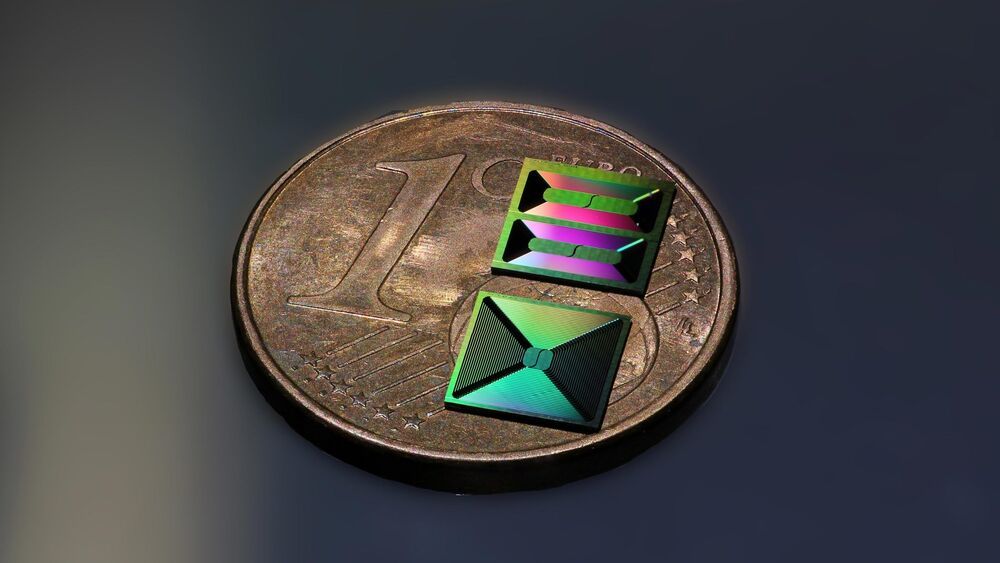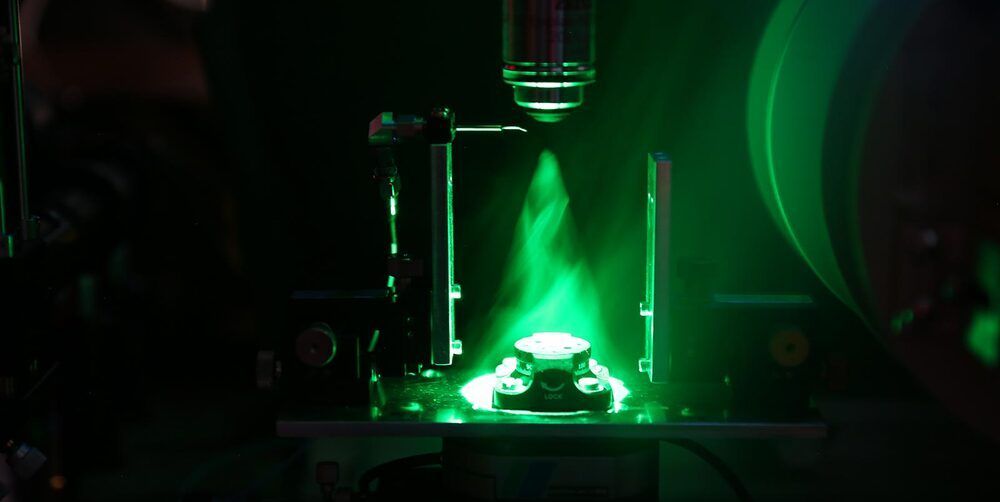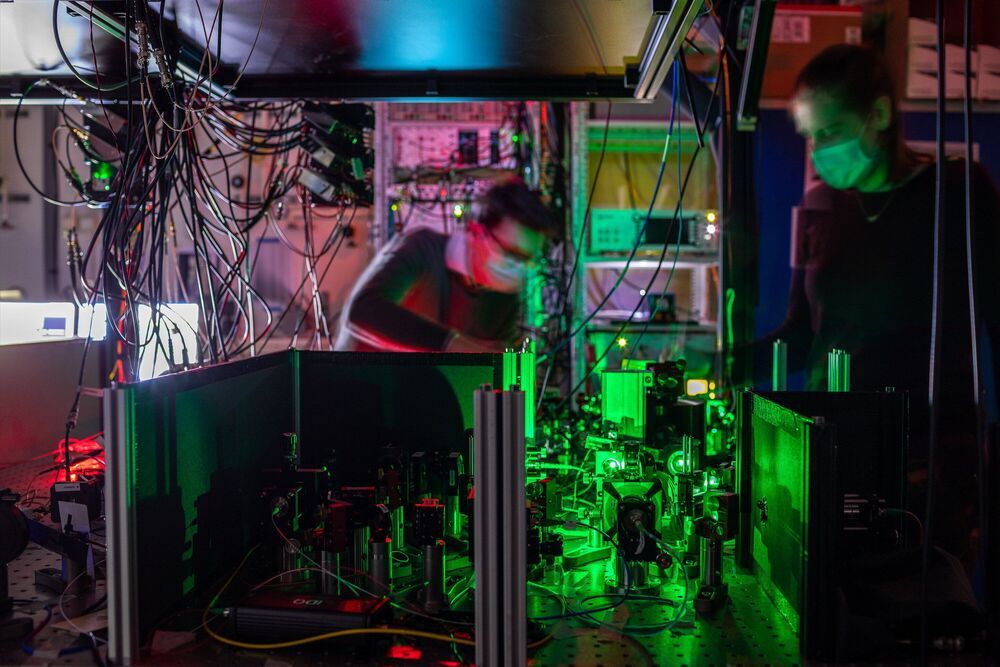Sorry, we’re having trouble playing this video.
Learn More.
World Economic Forum.
· —6-h ·
A call to protect the planet 📱
🔎 Learn more about the rise in e-waste.

Sorry, we’re having trouble playing this video.
Learn More.
World Economic Forum.
· —6-h ·
A call to protect the planet 📱
🔎 Learn more about the rise in e-waste.

Encoding information into light, and transmitting it through optical fibers lies at the core of optical communications. With an incredibly low loss of 0.2 dB/km, optical fibers made from silica have laid the foundations of today’s global telecommunication networks and our information society.
Such ultralow optical loss is equally essential for integrated photonics, which enable the synthesis, processing and detection of optical signals using on-chip waveguides. Today, a number of innovative technologies are based on integrated photonics, including semiconductor lasers, modulators, and photodetectors, and are used extensively in data centers, communications, sensing and computing.
Integrated photonic chips are usually made from silicon that is abundant and has good optical properties. But silicon can’t do everything we need in integrated photonics, so new material platforms have emerged. One of these is silicon nitride (Si3N4), whose exceptionally low optical loss (orders of magnitude lower than that of silicon), has made it the material of choice for applications for which low loss is critical, such as narrow-linewidth lasers, photonic delay lines, and nonlinear photonics.

Spin waves could unlock the next generation of computer technology, a new component allows physicists to control them.
Researchers at Aalto University have developed a new device for spintronics. The results have been published in the journal Nature Communications, and mark a step towards the goal of using spintronics to make computer chips and devices for data processing and communication technology that are small and powerful.
Traditional electronics uses electrical charge to carry out computations that power most of our day-to-day technology. However, engineers are unable to make electronics do calculations faster, as moving charge creates heat, and we’re at the limits of how small and fast chips can get before overheating. Because electronics can’t be made smaller, there are concerns that computers won’t be able to get more powerful and cheaper at the same rate they have been for the past 7 decades. This is where spintronics comes in.

January 25, 2021
CAMBRIDGE, England, Jan. 25, 2021 — Riverlane, a quantum software company, today announces that it has raised $20m in Series A funding to build Deltaflow, its operating system for quantum computers. Over the past year, Riverlane has signed up 20% of the world’s quantum hardware manufacturers to use Deltaflow and will use the funding to expand internationally to the US, Europe and beyond.
The round was led by European technology venture capital fund Draper Esprit, and supported by existing investors, Cambridge Innovation Capital, Amadeus Capital Partners, and the University of Cambridge.
Quantum computers will change the world by solving problems that are fundamentally impossible to solve on classical computers. This step change in computing power will have an enormous impact on a variety of industries, for example the pharmaceuticals and materials industry. Over the next five years we will continue to see rapid progress in quantum hardware development and, as the quantum industry develops, it’s vital that software is built on a solid foundation.


Amazon Web Services (AWS) is partnering with the Hebrew University of Jerusalem for a new quantum computing initiative as part of the company’s efforts, launched in 2019, to explore this area of research. These include a cloud-based quantum computing service Amazon Braket to accelerate research and discovery, the Amazon Quantum Solutions Lab to help businesses explore quantum applications, and the AWS Center for Quantum Computing research and development organization.
AWS’ latest collaboration with Hebrew University will fund a team of researchers from the academic institution’s Quantum Information Science Center (QISC), founded in 2013, and the Racah Institute of Physics to advance the understanding of quantum gates – fundamental building blocks of quantum computers, the parties said in a statement on Monday. The collaboration is the first between AWS and any Israeli academic institution in the field.
The university’s Professor Alex Retzker, a researcher of quantum technologies, will lead the research group as part of his role as a Principal Research Scientist at AWS.

Yesterday Nvidia officially dipped a toe into quantum computing with the launch of cuQuantum SDK, a development platform for simulating quantum circuits on GPU-accelerated systems. As Nvidia CEO Jensen Huang emphasized in his keynote, Nvidia doesn’t plan to build quantum computers, but thinks GPU-accelerated platforms are the best systems for quantum circuit and algorithm development and testing.
As a proof point, Nvidia reported it collaborated with Caltech to develop “a state-of-the-art quantum circuit simulator with cuQuantum running on NVIDIA A100 Tensor Core GPUs. It generated a sample from a full-circuit simulation of the Google Sycamore circuit in 9.3 minutes on Selene, a task that 18 months ago experts thought would take days using millions of CPU cores.”

A team of researchers from QuTech in the Netherlands reports realization of the first multi-node quantum network, connecting three quantum processors. In addition, they achieved a proof-of-principle demonstration of key quantum network protocols. Their findings mark an important milestone toward the future quantum internet and have now been published in Science.
The power of the internet is that it allows any two computers on Earth to connect. Today, researchers in many labs around the world are working toward first versions of a quantum internet—a network that can connect any two quantum devices, such as quantum computers or sensors, over large distances. Whereas today’s internet distributes information in bits that can be either 0 or 1, a future quantum internet will make use of quantum bits that can be 0 and 1 at the same time.
“A quantum internet will open up a range of novel applications, from unhackable communication and cloud computing with complete user privacy to high-precision time-keeping,” says Matteo Pompili, Ph.D. student and a member of the research team. “And like with the internet 40 years ago, there are probably many applications we cannot foresee right now.”

In 2003, Lyon was just finishing school and working as a hired hacker. Companies tasked him with rooting out vulnerabilities in their systems, and he’d developed mapping tools for the job. His electronic sniffers would trace a network’s lines and nodes and report back what they found. Why not set them loose on the mother of all networks, he thought? So he did.
The resulting visualization recalled grand natural patterns, like networks of neurons or the large-scale structure of the universe. But it was at once more mundane and mind-boggling—representing, as it did, both a collection of mostly standard laptop and desktop computers connected to servers in run-of-the-mill office parks and an emerging technological force that was far more than the sum of it parts.
In 2010, Lyon updated his map using a new method. Instead of the traceroutes he used in 2003, which aren’t always accurate, he turned to a more precise mapping tool using route tables generated by the Border Gateway Protocol (BGP), the internet’s main system for efficiently routing information. And now, he’s back with a new map based on BGP routes from the University of Oregon’s Route Views project. Only this time the map moves: It’s a roughly 25-year time-lapse of the internet’s explosive growth.